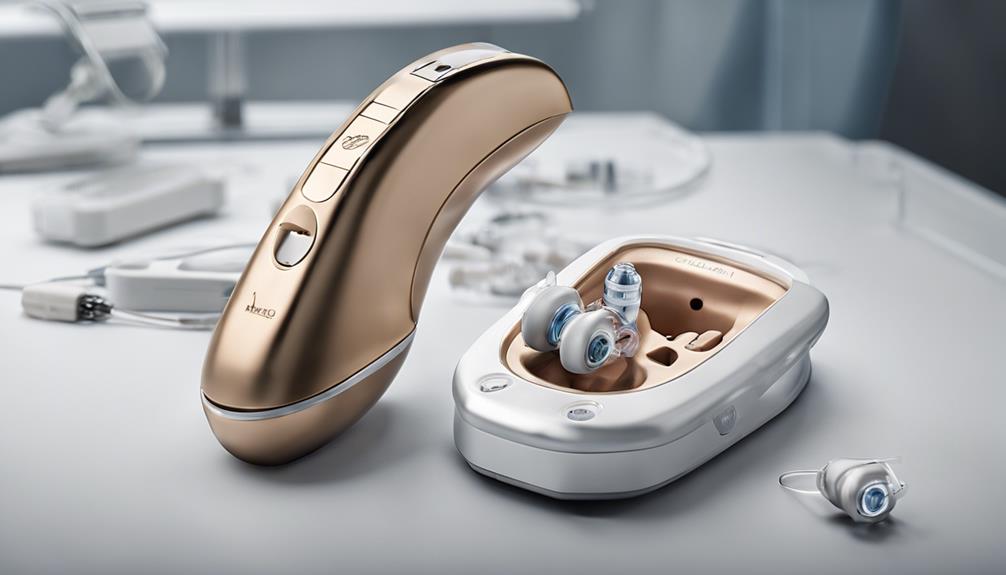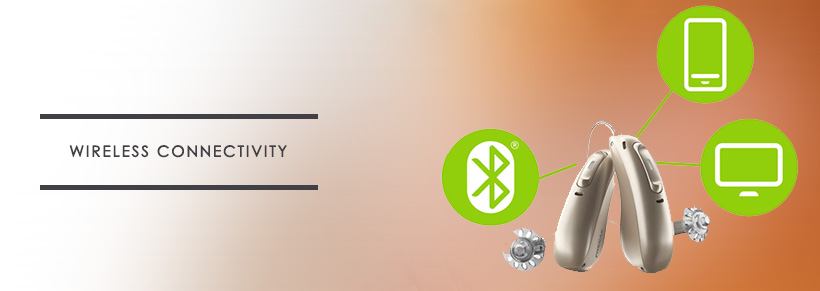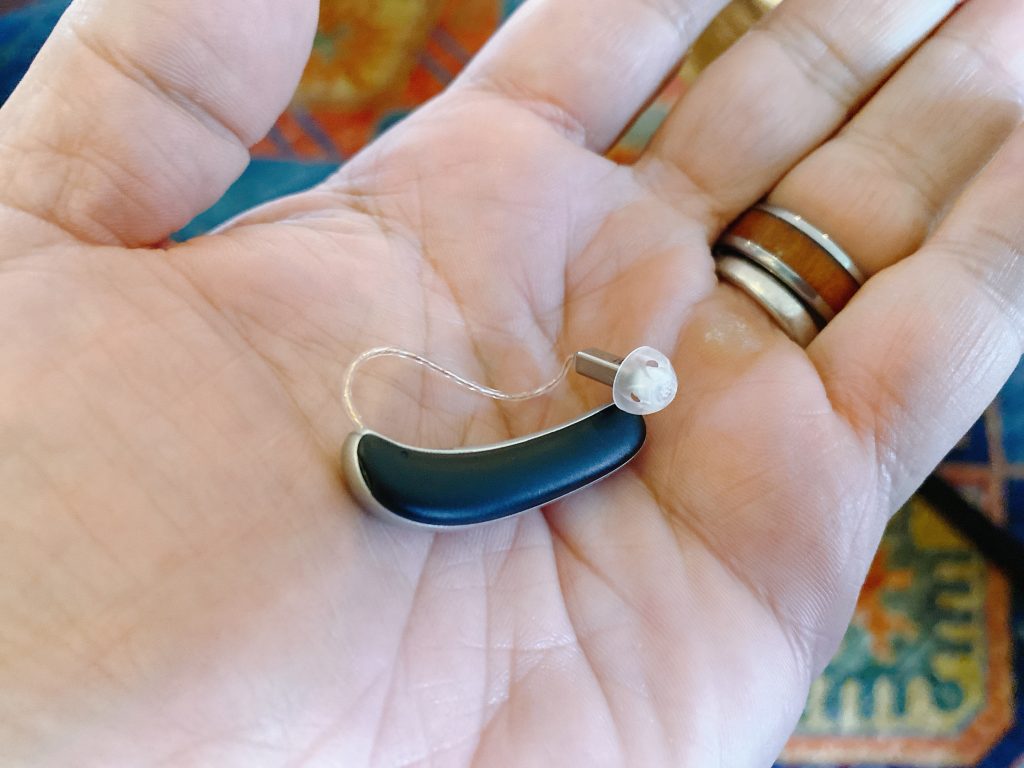Hearing Aid Technology: Shaping the Future of Sound
Hearing aid technology in the future is poised to revolutionize the way we experience sound. From the humble beginnings of analog devices to the sophisticated digital systems of today, hearing […]

Hearing aid technology in the future is poised to revolutionize the way we experience sound. From the humble beginnings of analog devices to the sophisticated digital systems of today, hearing aids have steadily evolved, offering increasingly personalized and effective solutions for hearing loss. The future promises even more transformative advancements, driven by the integration of artificial intelligence, bio-inspired designs, and advanced connectivity.
Imagine a world where hearing aids seamlessly adapt to individual preferences, automatically adjusting to different environments and even translating languages in real-time. This vision is no longer science fiction, but a tangible reality within reach, thanks to ongoing research and development in the field.
The Evolution of Hearing Aid Technology
Hearing aids have come a long way since their humble beginnings, transforming from bulky, rudimentary devices to sophisticated, personalized tools that help millions regain their ability to hear. This journey of innovation has been marked by significant breakthroughs, shaping the landscape of hearing healthcare.
Early Innovations and Analog Devices
The development of hearing aids can be traced back to the 19th century, with the invention of the first rudimentary devices. These early hearing aids were primarily acoustic horns and ear trumpets, designed to amplify sound waves. While these early models were limited in their effectiveness, they represented a crucial first step in addressing hearing loss.
- The first electric hearing aid, the “Acousticon,” was invented in 1901 by Miller Reese Hutchison. This device used a carbon microphone to amplify sound, marking a significant advancement in hearing aid technology.
- The development of vacuum tube technology in the 1920s led to the creation of more powerful and portable hearing aids. These devices, though still bulky, provided greater amplification and improved sound quality.
- Analog hearing aids, which used electronic circuits to amplify sound, became the dominant type of hearing aid in the mid-20th century. These devices were relatively affordable and readily available, making them accessible to a wider population.
The Digital Revolution in Hearing Aids
The introduction of digital signal processing (DSP) in the 1990s revolutionized hearing aid technology. Digital hearing aids use microprocessors to analyze and manipulate sound signals, offering a range of benefits over their analog predecessors.
- Digital hearing aids are capable of processing sound more accurately and efficiently, resulting in clearer and more natural sound quality. They can also adapt to different listening environments, adjusting amplification levels and filtering noise to optimize sound for the user.
- These devices offer greater flexibility and personalization. Users can adjust settings to suit their individual hearing needs and preferences, tailoring the hearing aid to their specific listening environment.
- Digital hearing aids also enable the implementation of advanced features, such as noise reduction, feedback cancellation, and directional microphones, further enhancing the user’s listening experience.
Current State of Hearing Aid Technology and Limitations
Today, hearing aid technology has reached a remarkable level of sophistication. Modern hearing aids are incredibly small and discreet, offering advanced features and seamless integration with other devices.
- Hearing aids now utilize Bluetooth connectivity, allowing users to stream audio directly from smartphones, tablets, and other devices. This feature enhances the user’s ability to enjoy music, podcasts, and phone calls.
- Artificial intelligence (AI) is being integrated into hearing aids, enabling them to learn and adapt to the user’s listening habits and preferences. AI-powered hearing aids can automatically adjust settings based on the user’s environment and activity, providing a more personalized and comfortable listening experience.
Despite these advancements, there are still limitations to current hearing aid technology.
- One significant challenge is the difficulty in accurately replicating the full range of human hearing. While hearing aids can effectively amplify sounds, they struggle to fully restore the natural nuances and complexities of sound perception.
- Another limitation is the ongoing need for manual adjustments and fine-tuning. While AI is making progress in automating these tasks, users often require regular visits to their audiologist to ensure optimal hearing aid performance.
Emerging Technologies in Hearing Aids
Hearing aid technology has witnessed remarkable advancements, and the future promises even more innovative solutions. Emerging technologies are poised to revolutionize the way hearing aids function, enhancing user experience and improving overall hearing capabilities.
Artificial Intelligence in Hearing Aids
The integration of artificial intelligence (AI) in hearing aids is transforming the landscape of hearing care. AI algorithms are being employed to enhance noise cancellation and speech enhancement capabilities, providing a more personalized and effective listening experience.
- Noise Cancellation: AI-powered noise cancellation algorithms analyze the surrounding sounds and identify specific noise sources, allowing the hearing aid to selectively reduce unwanted noise while amplifying desired sounds. This technology is particularly beneficial in noisy environments, such as restaurants or public transportation, where it can significantly improve speech intelligibility.
- Speech Enhancement: AI algorithms can also be used to enhance speech signals, separating speech from background noise. This technology can be especially helpful for individuals with hearing loss who struggle to understand speech in noisy environments. AI-powered speech enhancement algorithms can identify and amplify the frequency ranges associated with speech, making it easier for users to comprehend conversations.
Bio-inspired Hearing Aids
Bio-inspired hearing aids are designed to mimic the intricate workings of the human auditory system. These devices draw inspiration from the structure and function of the ear, aiming to provide a more natural and realistic listening experience.
- Cochlear Implant Technology: Cochlear implants, which are surgically implanted devices that directly stimulate the auditory nerve, are a prime example of bio-inspired hearing technology. They bypass damaged parts of the ear and provide electrical signals that mimic the natural sounds perceived by the human ear.
- Directional Microphones: Bio-inspired hearing aids can incorporate directional microphones that mimic the way the human ear localizes sound sources. These microphones can focus on sounds coming from a specific direction, filtering out noise from other directions, thereby enhancing speech intelligibility in noisy environments.
Wireless Connectivity and Smart Hearing Aids, Hearing aid technology in the future
Advancements in wireless connectivity have paved the way for the development of smart hearing aids that seamlessly integrate with other devices and technologies.
- Bluetooth Connectivity: Bluetooth technology allows hearing aids to connect wirelessly to smartphones, tablets, and other devices. This enables users to stream audio directly to their hearing aids, such as music, podcasts, and phone calls. Additionally, it facilitates remote control and adjustments of hearing aid settings through dedicated smartphone apps.
- Internet of Things (IoT): Smart hearing aids are increasingly leveraging the Internet of Things (IoT) to connect with other devices and services. This allows for remote monitoring of hearing aid performance, personalized adjustments based on user preferences and environmental conditions, and even the integration of smart home devices.
Personalized Hearing Solutions: Hearing Aid Technology In The Future
The future of hearing aid technology is moving towards a more personalized approach, tailoring solutions to individual needs and preferences. This shift is driven by the understanding that hearing loss is unique to each person, and one-size-fits-all solutions are no longer sufficient.
Personalized hearing profiles are the cornerstone of this approach. These profiles are created by audiologists using a combination of audiometric testing, patient interviews, and advanced algorithms. They capture a comprehensive picture of an individual’s hearing loss, including the severity, frequency range, and specific challenges they face in different listening environments. This data is then used to program hearing aids with customized settings that optimize sound amplification, noise reduction, and speech clarity for each individual.
Hearing aid technology in the future promises to be incredibly advanced, offering users seamless integration with their daily lives. Imagine hearing aids that not only amplify sound but also filter out unwanted noise, creating a personalized listening experience. This kind of technology may even incorporate features like real-time translation or even the ability to connect to the internet.
Just like dab water technology revolutionized water purification, these advancements in hearing aid technology have the potential to revolutionize the way we experience sound.
Types of Hearing Aid Fittings
Different types of hearing aid fittings cater to various levels of hearing loss and user preferences.
| Fitting Type | Advantages |
|---|---|
| Traditional Fitting | Simple and cost-effective, suitable for mild to moderate hearing loss. |
| Open-Fit Fitting | Improved sound quality and natural sound perception, suitable for mild to moderate hearing loss. |
| Custom-Fit Fitting | Maximum comfort and sound isolation, suitable for all levels of hearing loss. |
| Wireless Connectivity | Stream audio directly from smartphones, TVs, and other devices, enhancing communication and entertainment experiences. |
Wearable Sensors and Data Analytics
Wearable sensors, integrated into hearing aids or worn separately, can collect valuable data about the user’s environment and listening habits. This data includes noise levels, speech patterns, and even physical activity. Advanced data analytics algorithms process this information to further personalize hearing aid settings.
For example, a hearing aid can automatically adjust its settings based on the detected noise level, amplifying speech in noisy environments and reducing amplification in quiet ones. Data analytics can also identify patterns in the user’s listening habits, adjusting settings to optimize sound quality for specific situations like attending meetings or watching movies.
The Future of Hearing Aids
The future of hearing aid technology holds immense promise, with advancements poised to revolutionize the way we perceive and interact with sound. Imagine a world where hearing aids seamlessly adapt to your individual needs, seamlessly connect with your digital devices, and even enhance your cognitive abilities. This is the future that hearing aid technology is shaping.
Advancements in Sound Processing
Advancements in sound processing are at the forefront of hearing aid technology. This involves sophisticated algorithms that analyze sound signals in real-time, filtering out unwanted noise and amplifying desired sounds.
- Adaptive Noise Cancellation: This technology will continuously analyze background noise and automatically adjust the hearing aid’s settings to minimize distractions. This will allow users to focus on conversations in noisy environments, such as restaurants or crowded streets. For example, imagine a hearing aid that can identify the specific sounds of a conversation in a bustling market, isolating those sounds and amplifying them while suppressing the background noise of vendors and crowds.
- Personalized Sound Profiles: Hearing aids will learn your individual preferences and create customized sound profiles. This means that your hearing aid will automatically adjust to different environments, ensuring optimal sound quality in each situation. This will involve analyzing your listening habits, such as your preferred music genres, and adjusting the sound accordingly. For example, a hearing aid might automatically adjust the bass levels when listening to music, creating a more immersive and enjoyable listening experience.
- Directional Microphones: These microphones will be able to focus on sounds coming from a specific direction, improving speech intelligibility in noisy environments. Imagine a hearing aid that can focus on the voice of a speaker across the room, while simultaneously suppressing the background noise of other conversations.
Enhanced Connectivity
The integration of hearing aids with other devices is rapidly transforming the hearing aid experience.
- Direct Streaming: Hearing aids will be able to directly stream audio from smartphones, tablets, and other devices, eliminating the need for separate accessories. This will allow users to enjoy high-quality audio streaming for music, podcasts, and phone calls. For example, imagine seamlessly streaming a podcast directly to your hearing aids without the need for any additional devices or connections.
- Internet of Things (IoT) Integration: Hearing aids will be connected to the internet, allowing for remote monitoring, software updates, and personalized settings adjustments. This will provide users with greater control over their hearing aids and allow healthcare professionals to remotely monitor their progress. Imagine a hearing aid that can send data about your hearing health to your doctor, enabling them to make informed decisions about your care.
- Smart Home Integration: Hearing aids will be able to interact with smart home devices, such as lights, thermostats, and security systems. This will create a more accessible and intuitive living environment for individuals with hearing loss. For example, imagine a hearing aid that can alert you to a ringing doorbell or a fire alarm.
Personalized User Interfaces
The future of hearing aid technology will see the development of intuitive and personalized user interfaces.
- Voice Control: Hearing aids will respond to voice commands, allowing users to adjust settings, control volume, and access features without having to touch the device. Imagine being able to adjust the volume of your hearing aids simply by saying “louder” or “softer”.
- Haptic Feedback: Hearing aids will provide haptic feedback, such as vibrations, to alert users to incoming calls, notifications, or other important events. This will be particularly helpful for individuals with hearing loss who may not be able to hear auditory alerts. Imagine a hearing aid that vibrates on your ear when you receive a text message, allowing you to stay connected without missing important notifications.
- Augmented Reality (AR) Interfaces: Hearing aids will integrate with AR technology, providing users with visual cues and information about their surroundings. This will enhance their awareness of their environment and make it easier to navigate complex situations. Imagine a hearing aid that can overlay visual cues on your field of vision, providing information about nearby landmarks, traffic signals, or other important information.
Benefits and Challenges of Future Hearing Aid Technology
| Benefits | Challenges |
|---|---|
| Improved sound quality and speech intelligibility | Cost of advanced technology |
| Increased connectivity and accessibility | Potential for privacy concerns |
| Personalized and intuitive user interfaces | Complexity of integration with other devices |
| Enhanced cognitive abilities | Need for widespread adoption and education |
Final Summary

As we look ahead, the future of hearing aids is bright. The convergence of technology, innovation, and a growing understanding of the human auditory system promises to empower individuals with hearing loss to lead fuller, richer lives. By embracing these advancements, we can create a world where everyone has access to the transformative power of sound.










